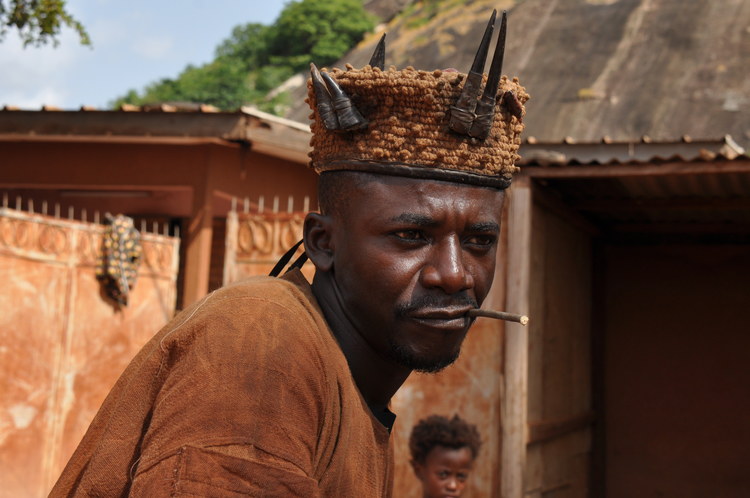Tour Program
-
Abidjan Day 1
Arrival in Abidjan

Arrival in Abidjan and transfer to the hotel.
Onomo Bed and Breakfast or similar accommodation (all rooms have air conditioning and air conditioning) -
Abengourou Day 2
Forest Kingdoms, from Abidjan to Abenguru (210 km – 5 hrs)

Departure to the region bordering Ghana. The origins of the Anyi monarchy trace back to the traditions of the large Akan ethnic group, who live in southwestern Ghana and southeastern Côte dIvoire. They share a similar way of life with the famed Ashanti Kingdom in Ghana, centered on the rich forests and the cult of kings. At the royal palace, we will meet with several high-ranking nobles in ceremonial robes and the priest in charge of the fetish that protects the throne. If he is available, we will even be received by the king himself.
Later, well meet the Komian community. If were lucky, well be able to witness a divination dance. The Akan people use the word komian to describe a trance. This term can also be applied to women who are dedicated to communicating with the spirit world through various divination techniques, such as shell throwing, water scrying, or dance. Dance is the most spectacular form of divination and is intended to resolve the most complex problems. Facing the interlocutor, some family members, and a curious crowd, accompanied by the rhythm of the tom-tom, the Komian woman performs a ritual dance until she achieves a trance.
Nutrition B - L - D
Overnight Hotel Royaume or similar (all rooms with private bathrooms and air conditioning, simple)
-
Yamoussoukro Day 3
Basilica in the Savannah, from Abengourou to Yamoussoukro (250 km - 5 hours)
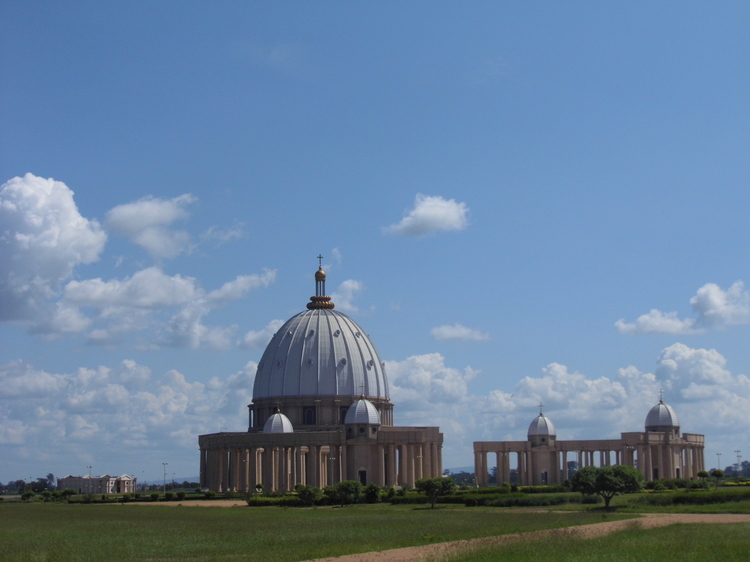
Arrival in Yamoussoukro , the countrys capital since 1983. Economic success attracts immigrants from neighboring Sahel countries and Western foreign investors, making Côte dIvoire a giant economy in French-speaking West Africa.
A child of the 1980s economic boom is the Basilica of Notre-Dame-de-la-Paix (Our Lady of Peace). According to the 1989 Guinness Book of World Records, its width of 150 meters made it the largest Christian religious building in the world (St. Peters Basilica in Rome is only 115 meters wide). With a stained-glass window area of 7,763 square meters, it is the largest in the world. Its architecture was inspired by St. Peters Basilica in Rome, and today the basilica remains a fervent place of worship in Catholic Africa.
In Yamoussoukro, cars navigate wide boulevards, constantly trying to avoid large potholes and free-roaming chickens! During our visit, our attention will also be drawn to the enormous government buildings, towering 14-story hotels, and an artificial lake home to caimans. Yet, amid all this, what most strikes our imagination is the sense of emptiness, of nothingness, that surrounds what has become a long-forgotten dream.Nutrition B - L - D
Overnight stay at the Royal Hotel or similar (all rooms with private bathroom and air conditioning; swimming pool) -
Bouake Day 4
Akan Line, from Yamoussoukro to Bouaké (non-direct route: 260 km - 5 hours)
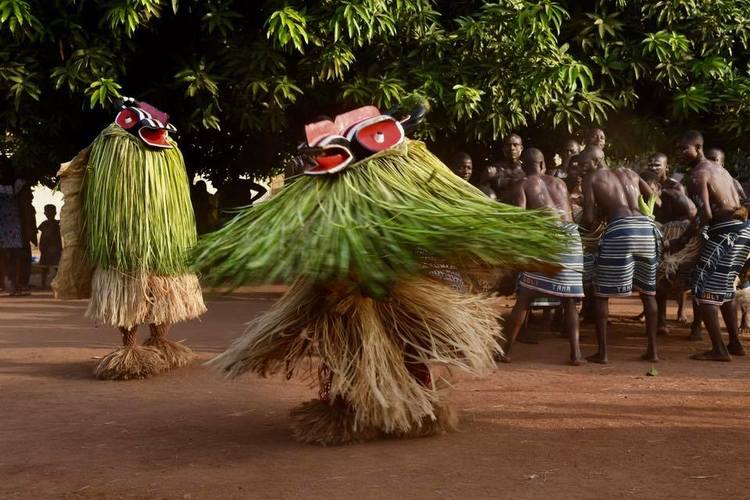
We meet the Baule people of the Akan clan. Arriving in this country from the East, they further enriched their cultural traditions by following the example of their neighbors.
This integration gave rise to a rich culture, reflected, for example, in intricate craftsmanship: beautiful statues representing the spirit world and beautiful masks.
In the Daloa region, we visit the Zauli dance masks. Zauli is a traditional dance of the Guro people. The Zauli mask used in the dance was created in the 1950s and was reportedly inspired by a girl named Jela Lou Zauli. However, stories about the origins of the masks vary, and each mask can have its own symbolic history. Zauli mask on YouTube: https://www.youtube.com/watch?v=dDYN2D4MvOMlist=PL3fWcyxhXJem5SB-CrAPiBevgyzVhSKWVindex=44
Later, well attend a Goli mask dance, which can be performed for entertainment or to celebrate the funeral of a high-ranking person. The Baule tribe adopted this ritual from their neighbors, the Van tribe, after 1900. During a celebration of peace and joy, participants will sing, dance, and drink palm wine. Goli mask on YouTube: https://www.youtube.com/watch?v=6og4Ql9CICcNutrition B - L - D
Overnight at Mon Afrik Hotel or similar (all rooms with private bathrooms and air conditioning; swimming pool). -
Korhogo Day 5
In the Senufo savannah, from Buake to Korogo (225 km - 6 hours)
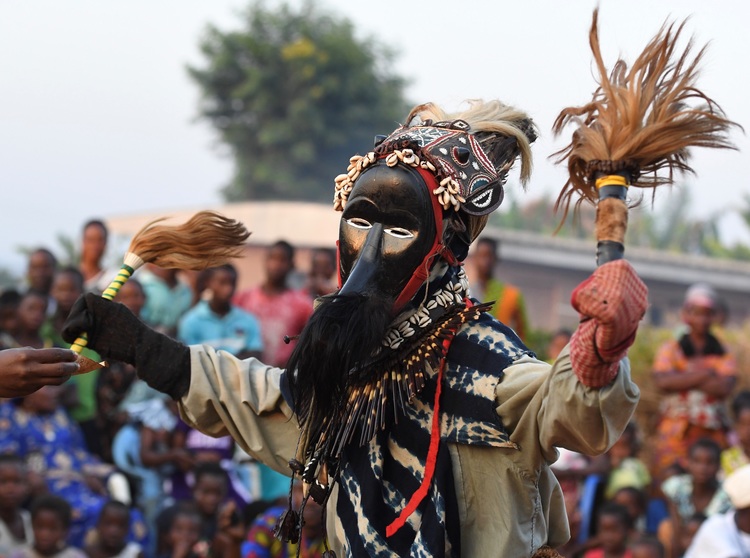
A morning drive northwards, the landscape gradually changes from bush to open savannah with large baobab trees.
The city of Korhogo is a must-see for any traveler visiting the northern regions of Côte dIvoire. Its history dates back to the 13th century, and today it is the capital of the Senufo, a tribe that has created some of Africas greatest works of art in almost every field: sculpture, weaving, painting, and blacksmithing. A visit to the fascinating craft market, where you can see wooden sculptures and fabrics with traditional Senufo patterns, is a must-see for any traveler visiting the northern regions of Côte dIvoire. These patterns have inspired contemporary artists such as Pablo Picasso, who personally traveled to Senufo country to meet and exchange experiences with local artists.
The Senufo are known for their complex initiation rites. Poro, the male initiation rite, is a lengthy process that takes 21 years to complete. It marks the transition from adolescence to adulthood, involving the learning of social and religious secrets that transform a boy into a true Senufo man.
Arrival in the evening at our comfortable hotel in Korhogo, where we will spend two nights.Nutrition B - L - D
Overnight at the Olympe Hotel or similar (all rooms with private bathrooms and air conditioning; swimming pool). -
Korhogo День 6
Panther Dance and the Iron Age. Korhogo (transfers and 60 km)
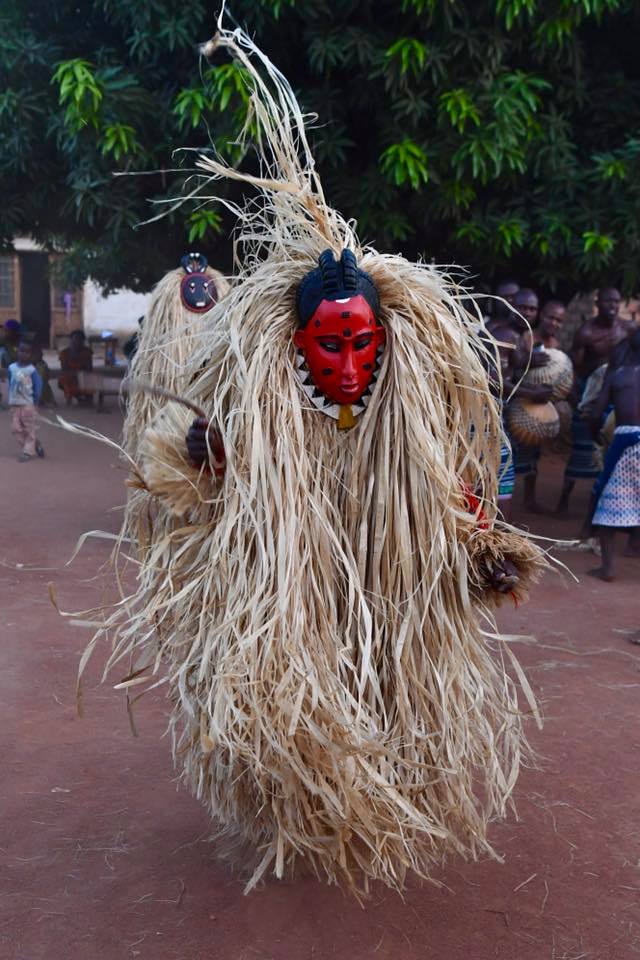
We travel north to a remote village to see an ancient iron smelting technique, a rare example of traditional iron metallurgy in Africa. This tribal technology takes us back to the first Iron Age in Africa, dating back to the prehistory and protohistory of Afro-Eurasia, a time when iron was the primary toolmaking material.
Iron ore comes from local mines and is crushed by hand. A traditional clay bellows furnace is loaded with layers of charcoal and ore, after which the fire is lit—the smelting process continues until the next morning. Iron smelting methods are secret and always associated with taboos and initiations. Blacksmithing is endogamous, meaning that only those born into blacksmithing families are entitled to a long apprenticeship in the craft.
Because of their terrifying magical powers, blacksmiths are often forced to settle outside of villages. This is a very powerful force: the creation of iron tools and weapons enables extensive agriculture, effective hunting, and successful warfare.
Lets return to Korhogo.
The most spectacular Senufo masked dance is the Boloi dance, known as the panther dance, performed by initiates.
Panther Dance on YouTube: https://www.youtube.com/watch?v=2OAD5LJj2JoNutrition B - L - D
Overnight at the Olympe Hotel or similar (all rooms with private bathrooms and air conditioning; swimming pool). -
Niofoin День 7
Dance of virgins from Koro to Bundiali (150 km - 5 hours)
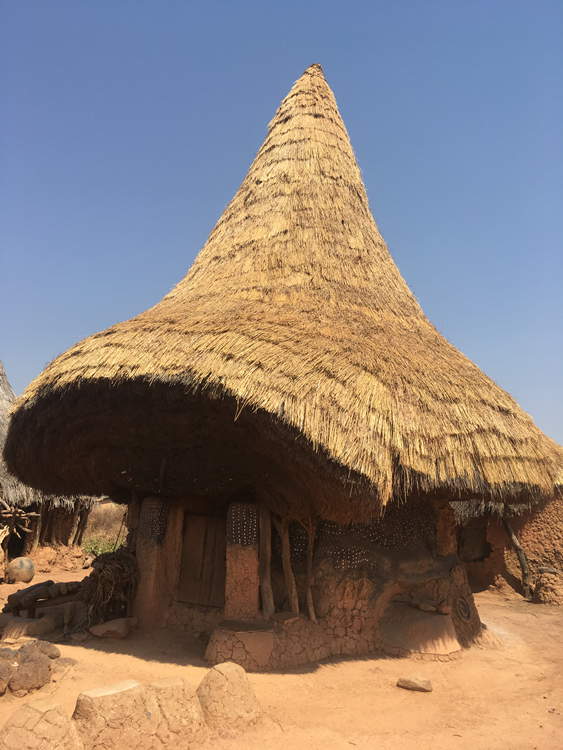
In the morning, return to the village to see the results of the smelting process. The sealed base of the clay furnace will be broken to extract the iron ore, and the blacksmith will chip away at a portion of it. He will then use a bellows to heat the resulting metal powder until it melts in a crucible and pour it into a mold. The metal is then heated again and hammered into the desired shape in the forge, which will eventually be polished to remove any imperfections or burrs.
Well leave the main road and discover the village of Nyofoin, with its clay granaries decorated with symbolic bas-reliefs and a unique sacred house with a high conical roof. The house is decorated with ornaments and sacred objects belonging to the animistic cults still practiced by the Senufo people.
Late in the evening, we attend the Ngoro, a virgin dance performed by Senoufou and part of the Poro Initiation. Young initiates spend months together in secluded sacred groves, where they learn the social and religious secrets that transform a girl into a true Senoufou.Nutrition B - L - D
Overnight at Le Paysan Hotel or similar (all rooms en suite and air conditioned) -
Odienne region Day 8
Sacred Warriors, from Boundiali to Odienne (150 km - 5 hours)

We begin our day with a meeting with the renowned Fulani nomads, who are constantly searching for pastures for their herds of zebus. The Fulani are easily recognizable by their conical thatched huts, the walking sticks they always carry on their shoulders, the water bottle they carry around their necks, the machete they hold, and their proud posture. We then visit a village populated mainly by women and children. We are invited into their huts to view old family photographs, dowry gifts, and so on. The women wear beautiful colorful fabrics and wear very special tribal jewelry around their necks and in their hair (Baltic amber, Czech pearls, old Venetian murrines, stones, buttons, and any other plastic item they might find appealing).
In the Odienné region, well meet the Malinke , descendants of the old Malian Empire. Today, they are considered a kind of local police force, guardian angels watching over villages, mediators in disputes, and, of course, great healers. Brave and knowledgeable about the territory, they are hired by the government to guard the countrys northern borders.
Well meet the Dozos and take a stroll through the savannah with them, dressed in traditional bogolan cloth and carrying guns covered in amulets. Theyll introduce us to traditional medicinal herbs and lead us to a sacred site, where theyll dance to the thumping rhythm of tom-toms and demonstrate their power.
Nutrition B - L - D
Overnight at the Hotel Les Frontières or similar (all rooms with private bathrooms and air conditioning; swimming pool) -
Mount Tonkpa Day 9
Acrobatic masks, from Odienne to Man (270 km - 5 hours)
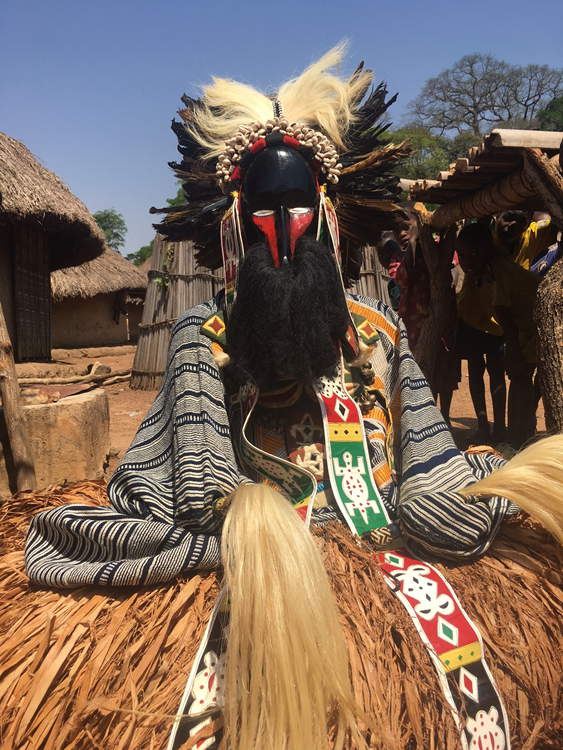
The day is dedicated to meeting Yakuba, also known as Dan.
We visit villages built on the hillsides and characterized by large round huts with thatched roofs - some of the houses are decorated with frescoes created by women during ceremonies.
Among the fragrant branches of a coffee plantation and at the foot of a huge Iroko tree, we visit a large pond inhabited by revered catfish, guardians of the ancestors. Soon, the echoes of tom-toms and the cries of initiates signal the masks that it is time to leave the sacred forest... and so they appear, giving us unforgettable emotions.
Yakuba dances on YouTube: https://www.youtube.com/watch?v=DdFswalN9ek
We move south, and when Mount Tonkpi with its tooth appears, we know that we are close to our goal: man arose at the foot of 18 extremely green mountains and is the capital of the We and Gere ethnic groups.Nutrition B - L - D
Overnight at the Les Cascades Hotel or similar (all rooms with private bathrooms and air conditioning; swimming pool) -
Gbepleu rainforest Day 10
Tropical Forests and Liana Bridges
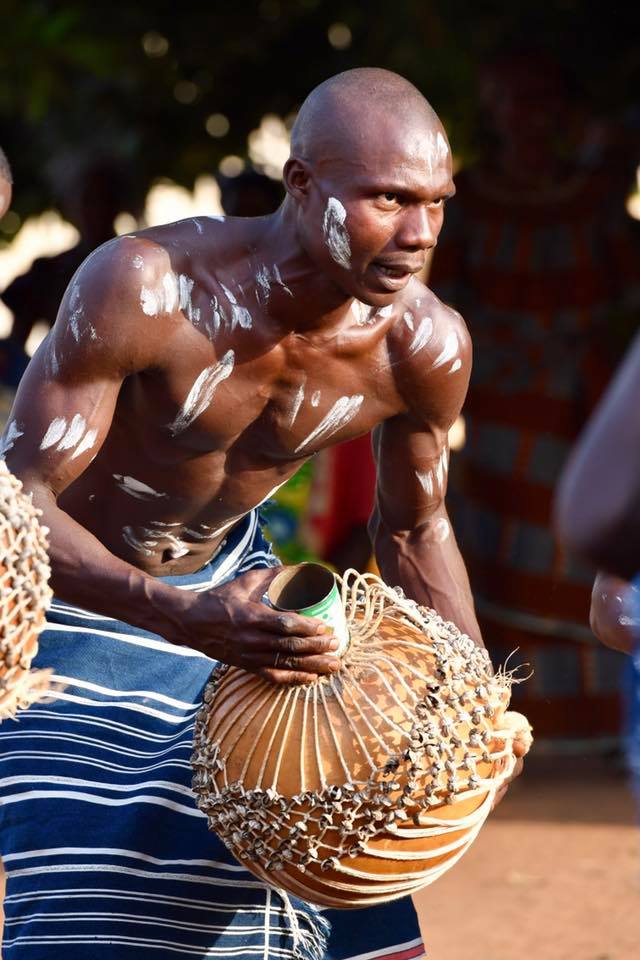
The tropical forest that stretches between Côte dIvoire and Liberia is famous for its long liana bridges. The origins of these bridges are shrouded in mystery (they are secretly built by young men in a single night!). Crossing them is easy as long as the rules are followed, and heavy objects or infants are not carried across them.
At the end of the day, well enjoy a short excursion to the Gbepleu rainforest, where sacred monkeys embody the origin of this towns name. In Côte dIvoire, sacred rainforests are hidden behind every town, neighborhood, and village. They represent a passageway between the human and magical worlds, and it is here that young people are initiated into the social and spiritual secrets of their tribe, primarily through the use of masks. The Guéré masks. In the Guéré cosmogony, a creator god communicates with people only through his intermediaries, the masks: during the mask dance, the distance between the human and spiritual worlds disappears.
Meals: Full board
Accommodation : Les Cascades or similar (all rooms have air conditioning and air conditioning) -
Abidjan Day 11
Forest Rituals. Transfers and flights to Abidjan.

Four-wheel drive vehicles are required to explore this remote forested area, where foreigners are rare. The trail crosses wooden bridges and leads to more isolated settlements inhabited by the Guere ethnic group. Sacred and spectacular masks will perform for the village.
Drumming announces rare performances by Jongleurs. Juggling is an ancient tradition that is now disappearing. Initiated girls, their faces painted white, perform a unique acrobatic dance. In the afternoon, transfer to the airport for a flight to Abidjan.
Nutrition B - L - D
Overnight at Onomo Hotel or similar (superior rooms with private bathroom and air conditioning). -
Grand Bassam Day 12
Grand Bassam, old colonial atmosphere

The plateau (urban area) is growing rapidly, not horizontally, as in most African cities, but vertically, with its modern buildings and skyscrapers. The modern urban area is defined in the west by the harbor and its endless lines of people waiting for the ferry, and in the east by the incredible silhouette of the Peter and Paul Cathedral.
Our visit begins with a ride on a public ferry, offering a panoramic view of the plateau from the water. From the bustling market of Treichville, we travel to the peaceful and quiet Cocody, an elegant residential area home to the Prime Ministers office and several white colonial buildings.
In the Youpougon neighborhood, we meet Faniko, laundry workers who wash clothes in the river and dry them on the surrounding grassy knoll. Hundreds of colorful garments and fabrics, lying on the grass, create a giant patchwork quilt. We then visit the National Museum with its tribal art collection, featuring masks and statues from the various ethnic groups of Côte dIvoire.
Trip to Grand Bassam.Nutrition B - L - D
Overnight Hotel Etoile du Sud or similar (all rooms with private bathrooms and air conditioning; swimming pool with sea view) -
Abidjan Day 13
from Grand Bassam to Abidjan, out (50 km)
Grand Bassam is an old town built on a sand bank between the lagoon and the ocean. It was the former capital of the French Ivory Coast colony. Thanks to its calm avenues shaded by tall trees, large bougainvillea and well-preserved colonial buildings, Grand Bassam has a magic atmosphere. The old post office is a jewel of French colonial architecture. The Costume Museum, in the former governor’s palace, with its large outer staircase is a true architectural gem and its unique collection of tribal costumes, masks, ornaments and ethnographic photographs gives an interesting perception of the country history and culture.
Tour ends up at 18h00 in Abidjan.
Transfer to the airport for the flight out. End of our services.Meals B – L
Day-use rooms till 18h00
Program cost per person accomodation - double room
For a group of 6 or more people (maximum 16 people) – 3940 euros
For a group of 4/5 – 4900 euros
For a group of 2/3 – 7700 euros
Supplement for arrival on December 27 - 100 euros
Single occupancy surcharge accomodation - single room
590 Euro
Included
- Meeting at Abidjan airport on arrival and departure
- Flight from Abidjan to Bouake.
- Transfers and tour in minibuses/air-conditioned minibuses.
- English-speaking local guide
- Excursions and visits according to the program
- Accommodation in standard rooms,
- Full board: all meals as described, from breakfast on day 2 until lunch on day 11
- Bottle of mineral water per person on bus/car during visits
- Entrance fees to parks, concessions, protected areas and cultural sites
- First aid kit
- All service charges and taxes
Not included
- International flights to/from Abidjan
- Payment for a visa and any airport departure taxes
- Any meal or sightseeing tour other than those specified
- Mineral water and drinks during meals and in hotels.
- Porterage services
- Pay for personal photos and videos
- Medical insurance (required)
- Tips for drivers, guides and hotel staff
- Costs associated with delayed or lost baggage
- Personal expenses, phone calls, laundry, etc.
- Anything not mentioned as included
- Abidjan, skyscrapers and lagoons
- Akan tribes and Sudanese architecture
- Ferkedesugou - a crossroads on the way from Mali to Burkina Faso
- Rites of passage and Panther Dances
- Encounters with Fulani nomads
- Holy Malinke Warriors
- Hunters of Dorzo
- Acrobat yakub masks
- Rain forests and vine bridges
- Coffee and cocoa plantations
- Basilica of Notre-Dame de la Peille in the middle of the savannah
- Grand Bassam resort: old colonial atmosphere
Countries






